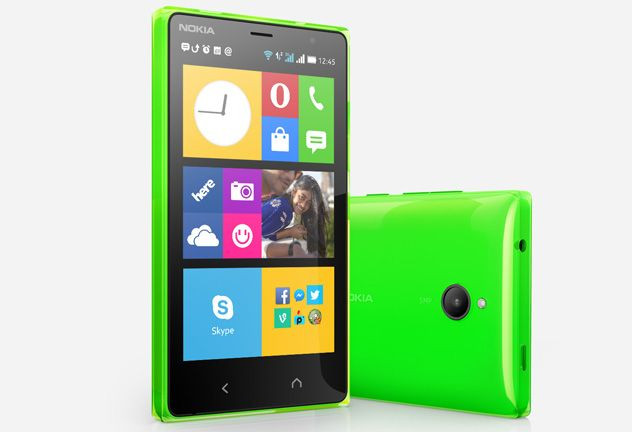Why Microsoft Is Doubling Down On Google's Android To Save Its Mobile Future

There are over 1 billion active users on Android per month around the globe, according to Google Inc. (NASDAQ: GOOG) on phones made by Samsung, HTC, Lenovo and LG.
Add Microsoft (NASDAQ:MSFT) to that list.
In June, Microsoft launched the Android-powered Nokia X2 phone, a second-generation of the smartphone targeted at the low end of the market. Now, Microsoft is said to be adding an Android-powered device to its flagship line of Lumia phones.
With the release of the Nokia X2 Microsoft made it quite clear that its Android-powered devices were not intended to be a competitor of its own Windows Phone operating system. So why would Redmond double-down on Android for its flagship Lumia line, a showcase for the excellent but slow-selling Windows Phone operating system?
With its own version of Android, Microsoft can get users more acquainted with Outlook, Bing and Nokia Maps, rather than Google services such as Gmail, Google Search and Google Maps. “I think [Microsoft is] trying onboard Android customers into the Windows Phone ecosystem with smaller steps,” Nick Spencer, senior practice director at ABI Research, told International Business Times via email.
That's the strategy around the Nokia X2, which runs an open-source version of Android that makes Microsoft's web services prominent. Nokia has also developed its own app store to be used instead of Google’s Play Store, meaning Google Inc. (NASDAQ: GOOG) does not have any involvement in Microsoft’s Android development. This is likely the type of system that Microsoft would use on any future Android-powered phones it releases.
While the Lumia mobile phone line may get an Android heart, the name "Lumia" itself may be going away in favor of "Nokia by Microsoft." Microsoft is supposedly close to announcing a brand restructuring following its April acquisition of the mobile hardware manufacturer Nokia, with which it has collaborated on numerous devices.
The question is what does this all mean for the future of the Windows Phone operating system. “If [Microsoft] did release a high-end smartphone it would a signal that [it is] abandoning Windows Phone, which I don’t think [it] will anytime soon,” Spencer said.
Microsoft has already indicated plans to release several devices in 2014 running its latest Windows Phone 8.1 operating system with a considerable amount of its new models expected to cater to midrange to low-end markets. Thus far in 2014 three devices have been released under the Nokia Lumia line running the new system, the high end Nokia Lumia 930 and the low-end Nokia Lumia 630 and Nokia Lumia 635.
While Nokia’s Lumia devices have been well received by critics and reviewers, the line has not seen similar commercial success, Spenser explained. Nokia Lumia remains stagnant at about 3 percent of the market share of smartphone shipments and only passed 10 million unit shipments once, when it shipped 11 million Lumia units in the fourth quarter of 2013.
But device rebranding – or – a Windows Phone package wrapped in a shiny Android bow could be just the push Microsoft’s smartphone line needs to get consumer attention. Similar to many Nokia Lumia smartphones, though the rumored Android-powered smartphone may launch on Microsoft’s flagship line, it may not necessarily be a high-end device.
“[Android] is a low end tactic, for now at least,” Spenser said.
Even Google is making a major push in the low-end market in 2014, with its Android One device, which is intended to feature competitive specifications at an affordable price. Both Google and Microsoft have been named among the manufacturers are now seeing the value in catering to emerging markets just as fervently as they do mature markets.
© Copyright IBTimes 2025. All rights reserved.




















